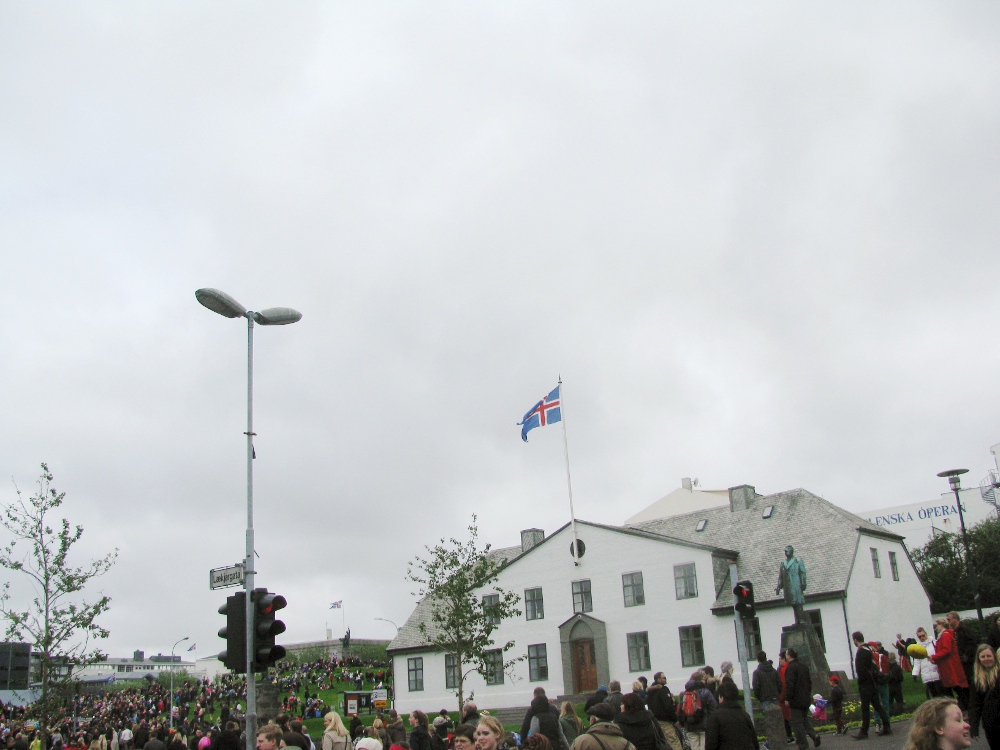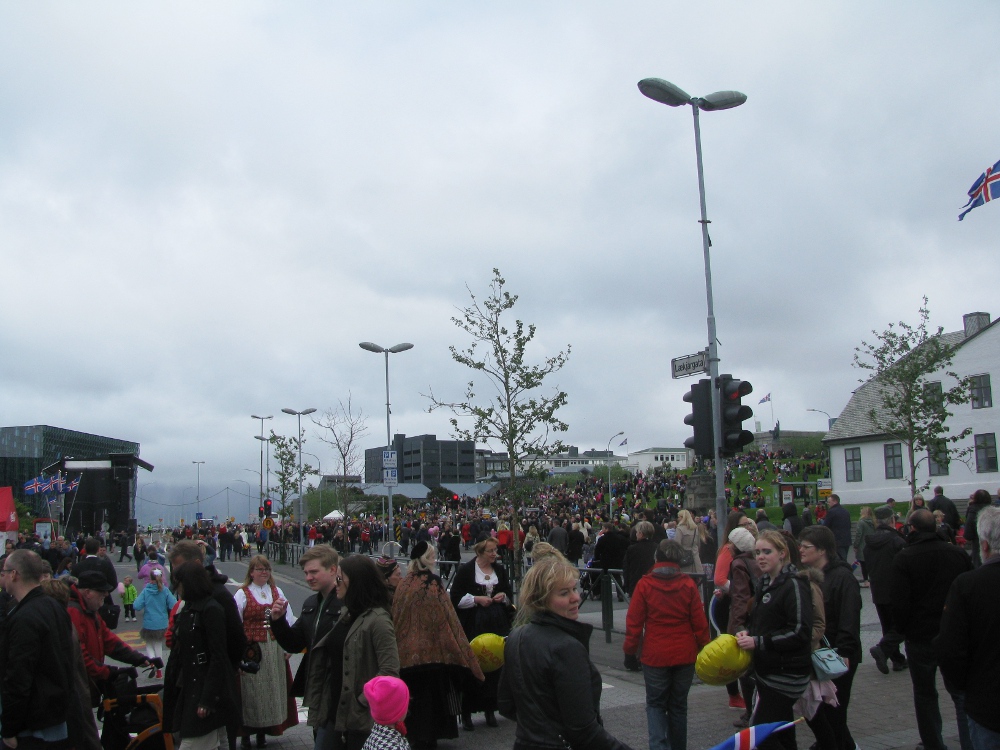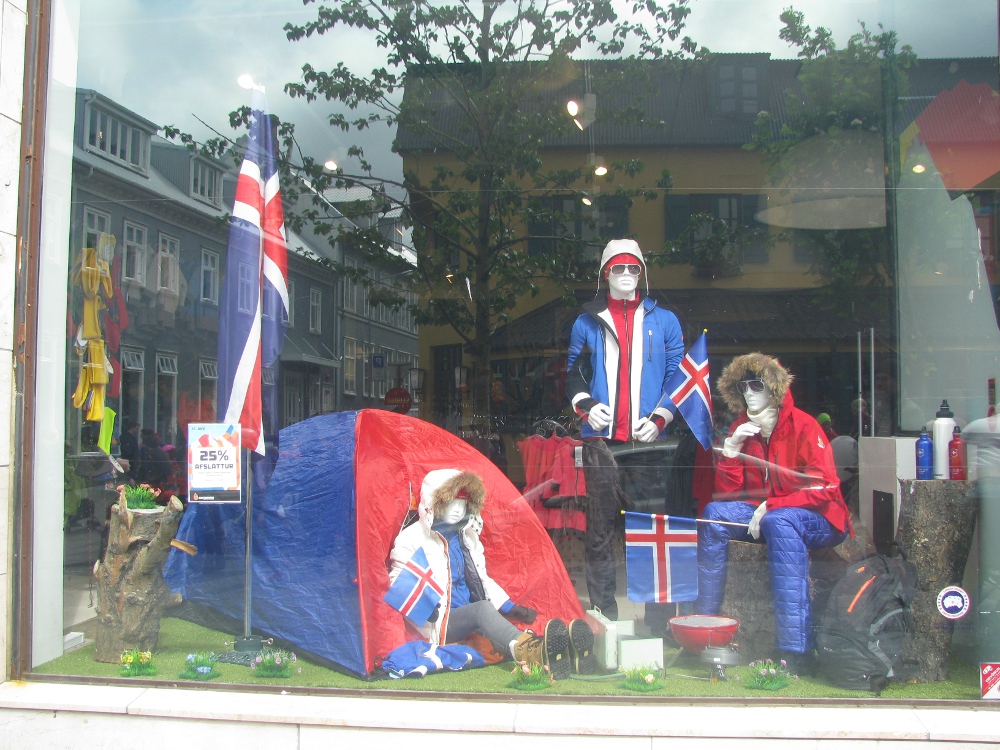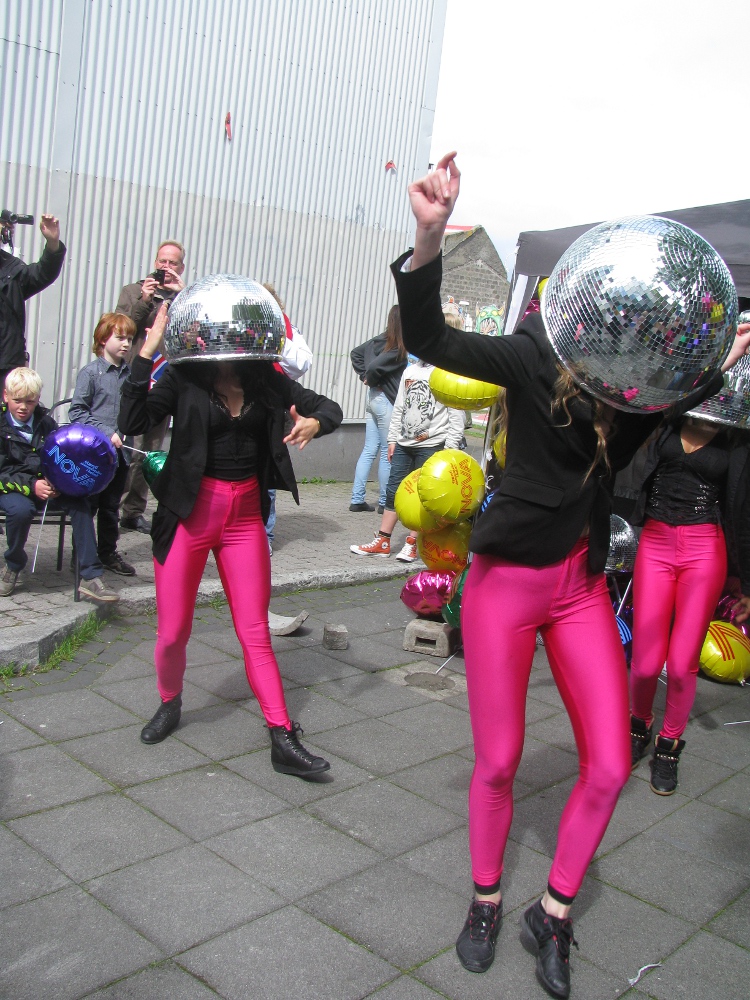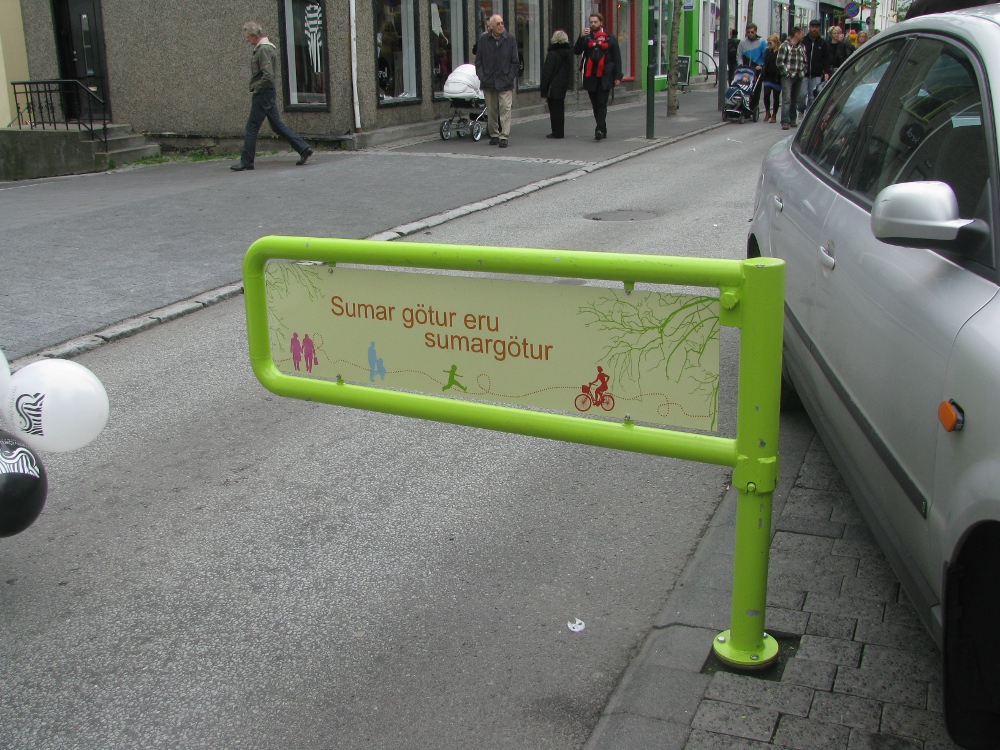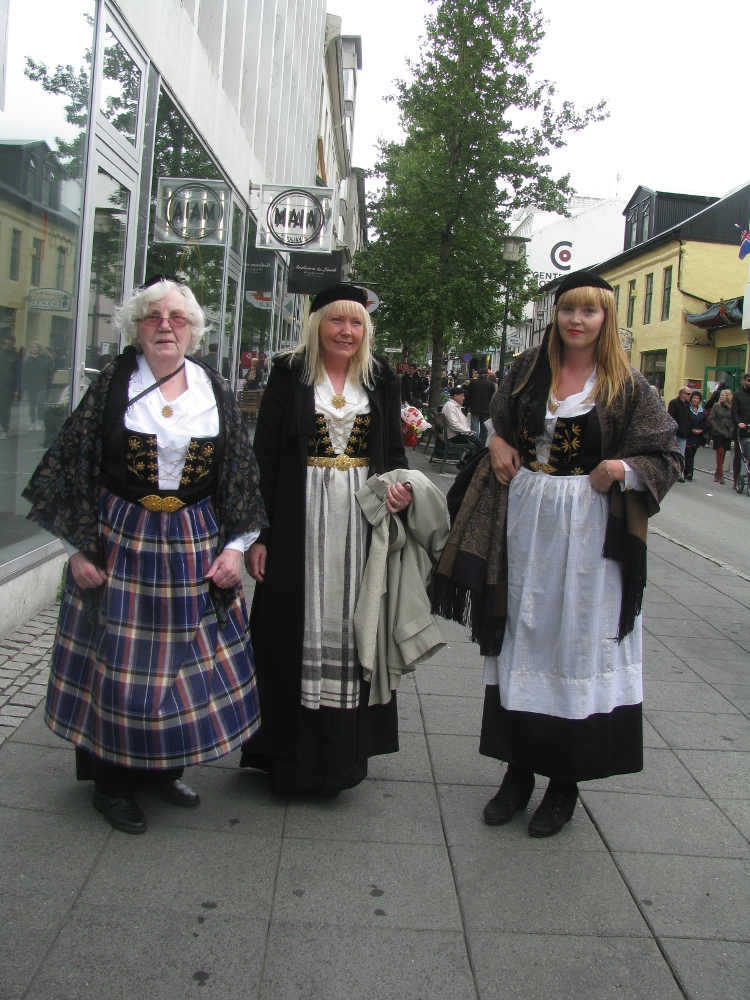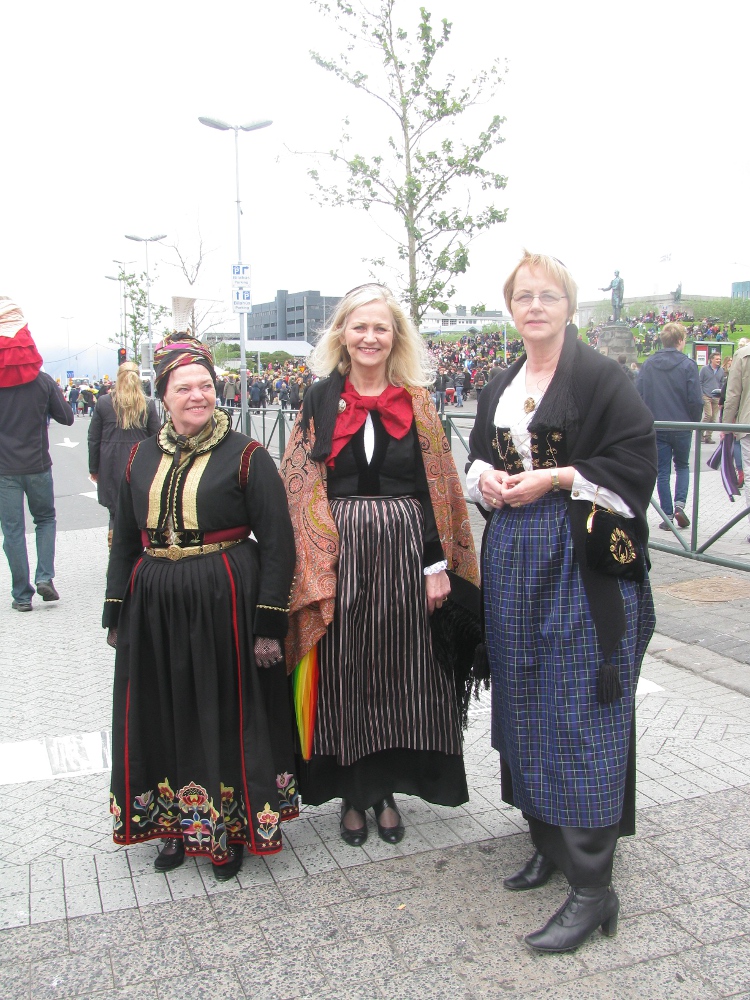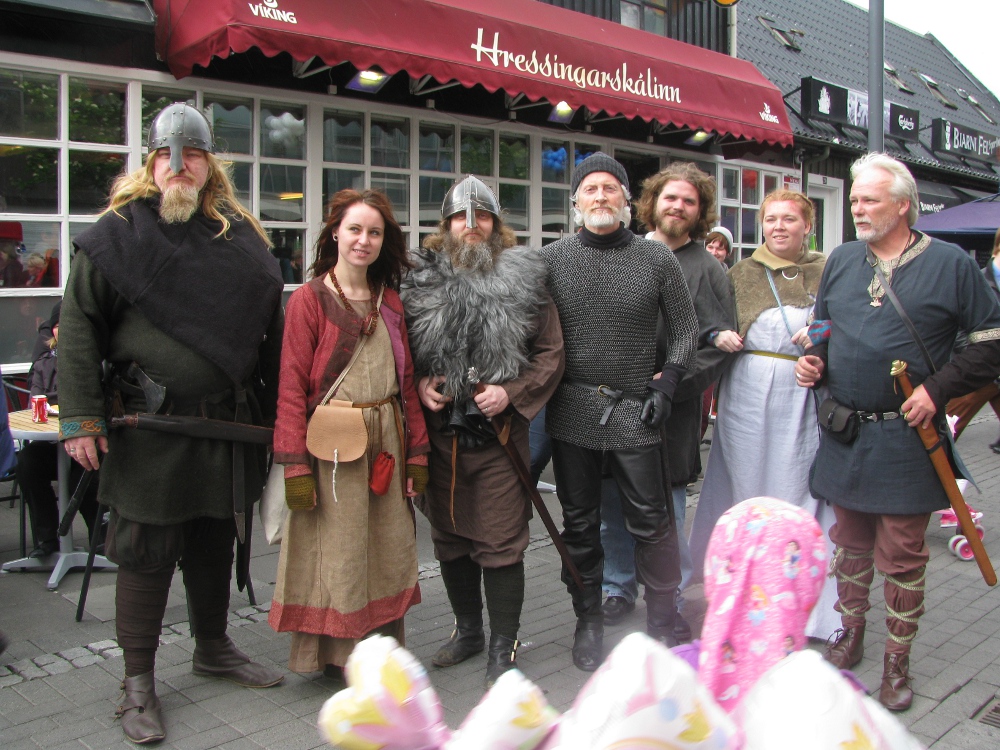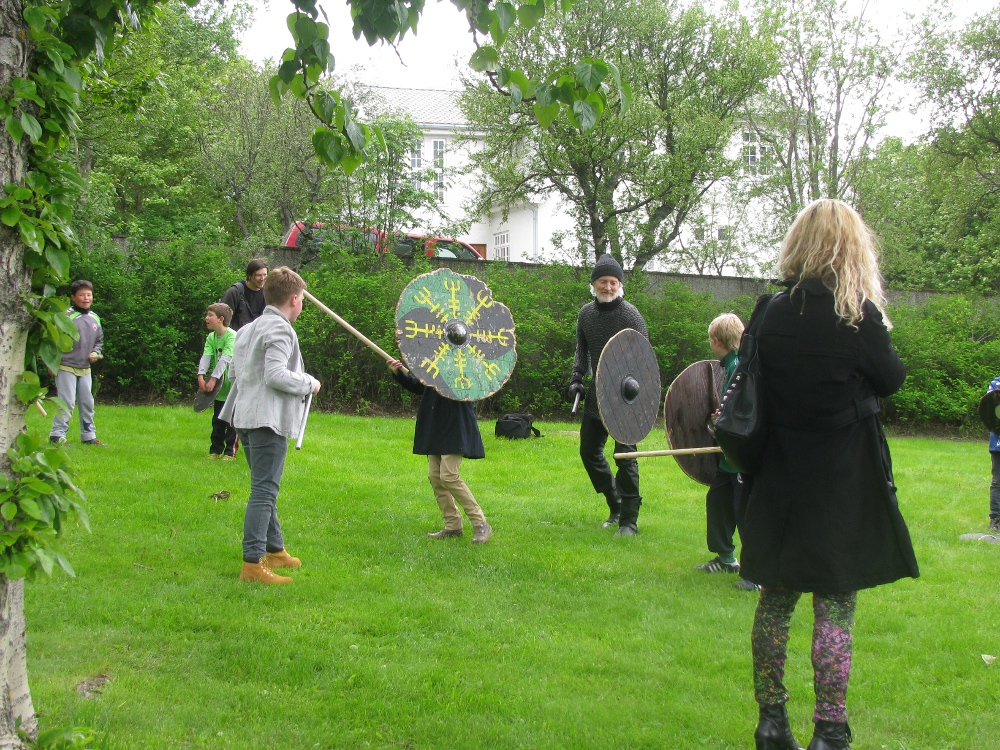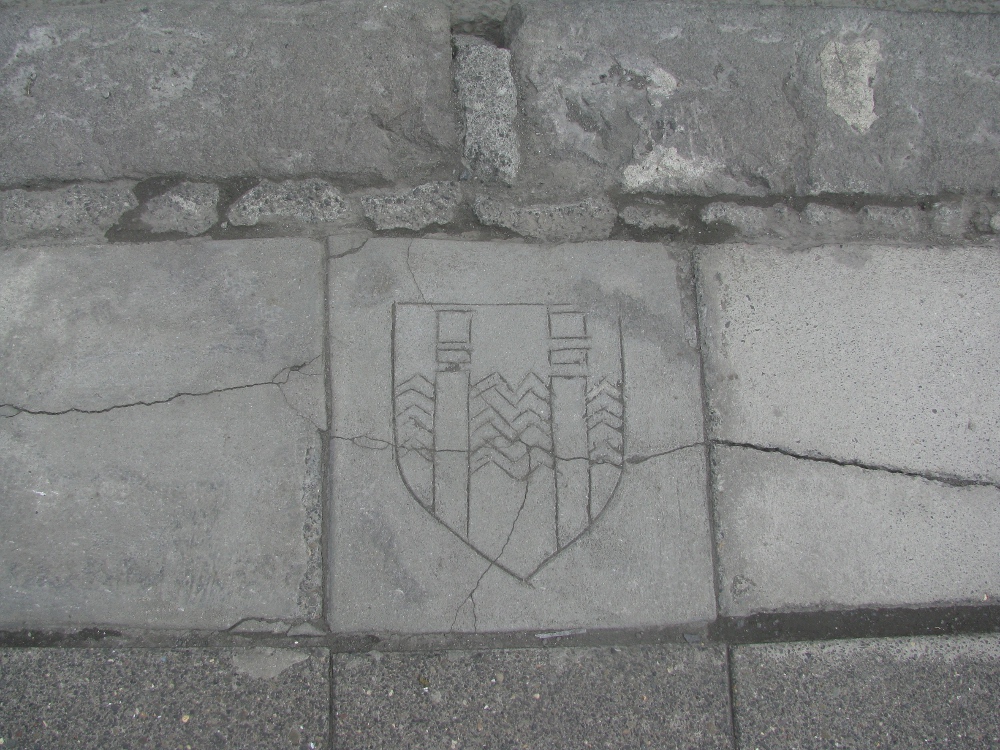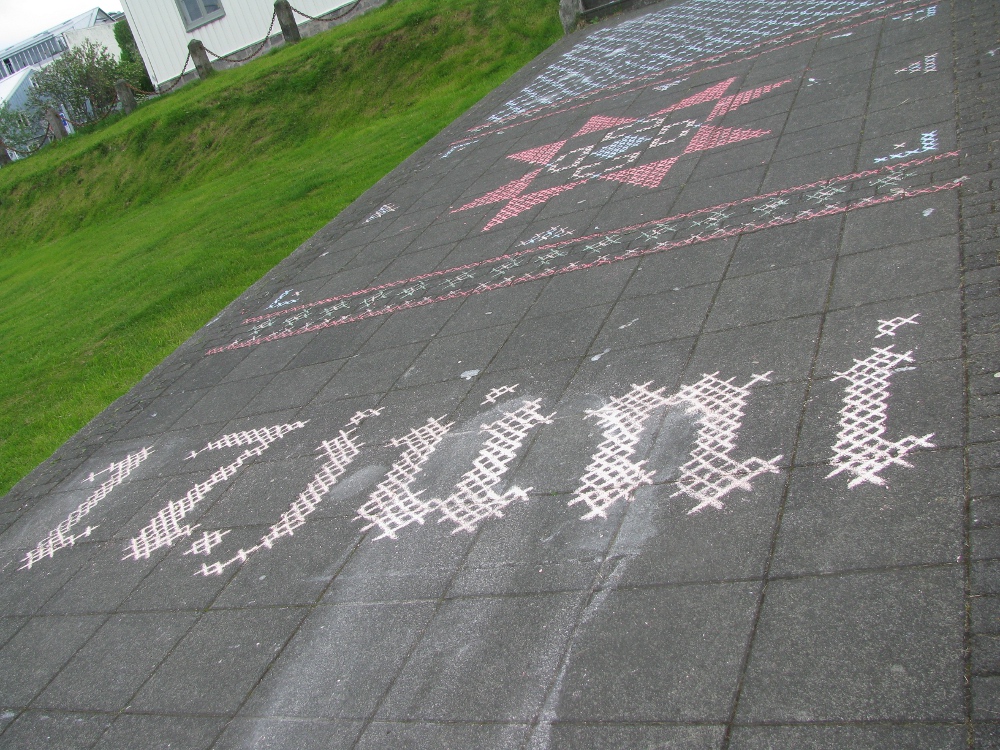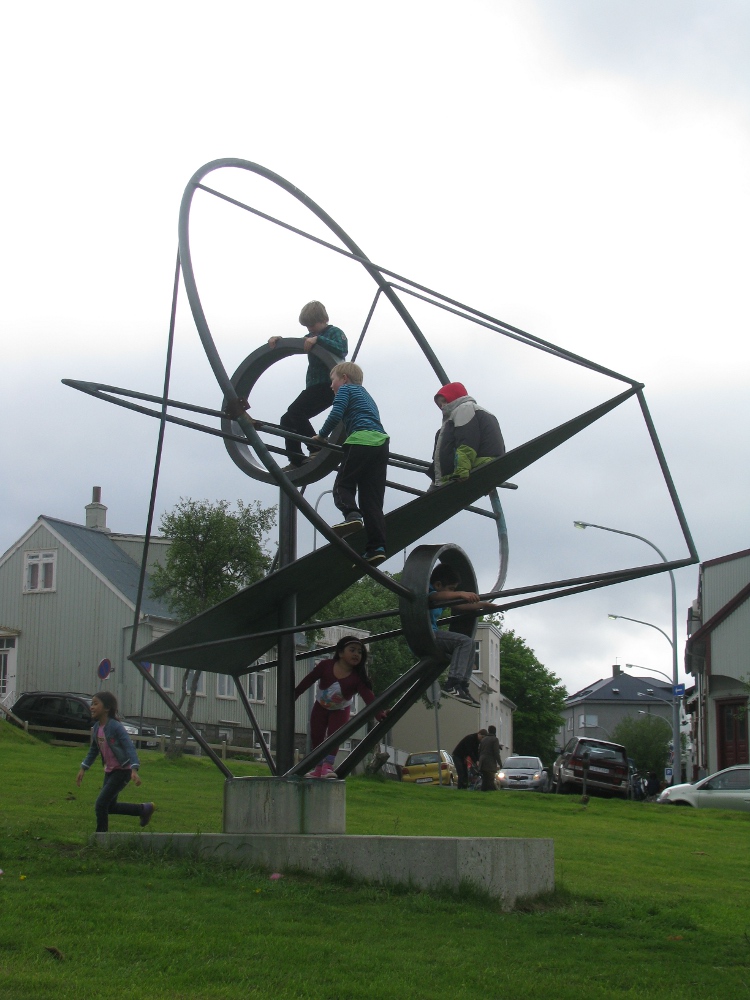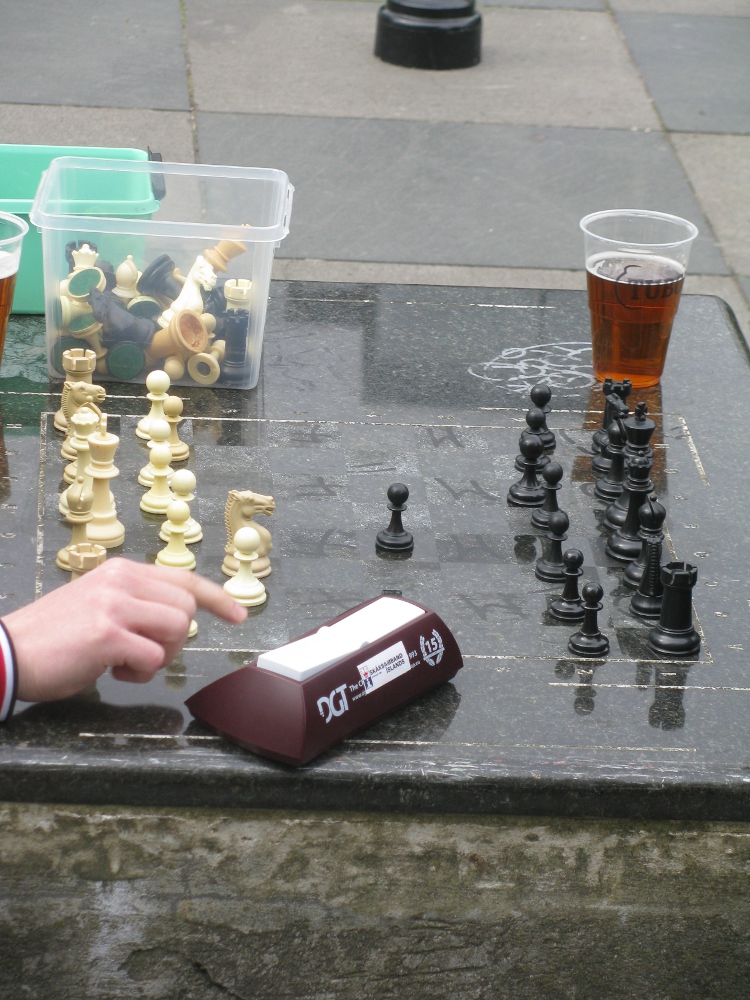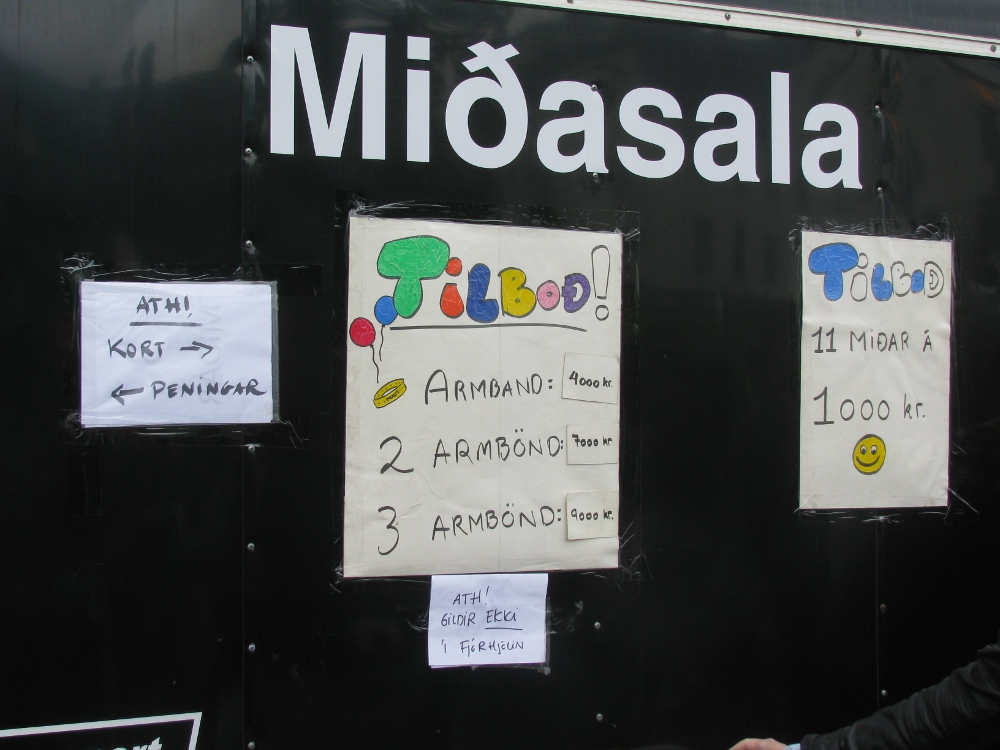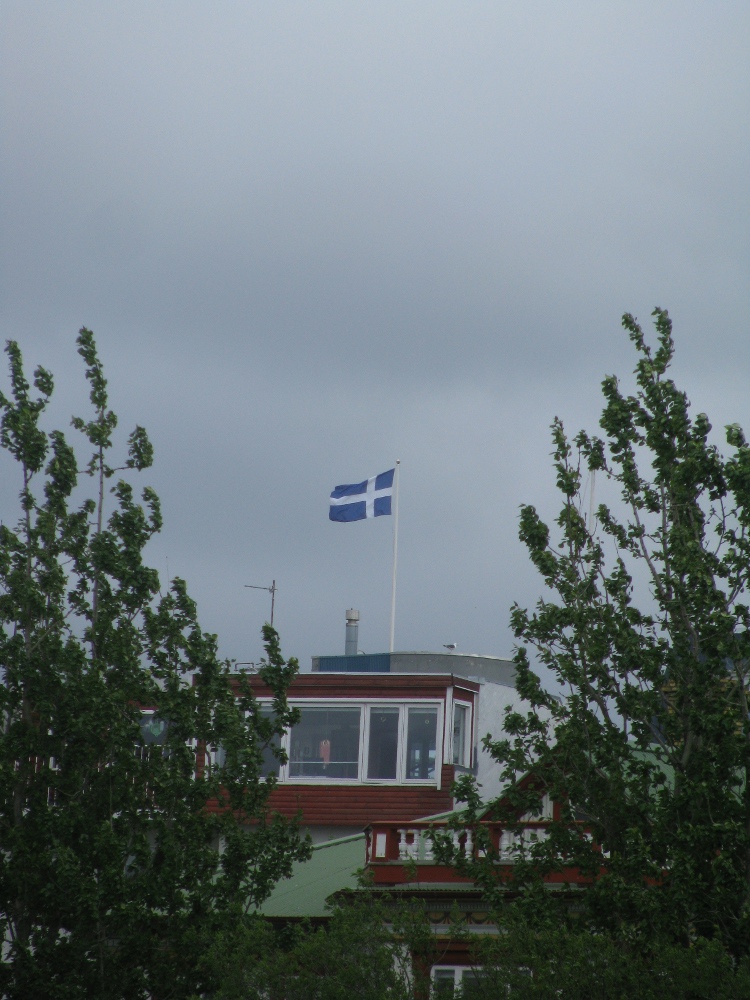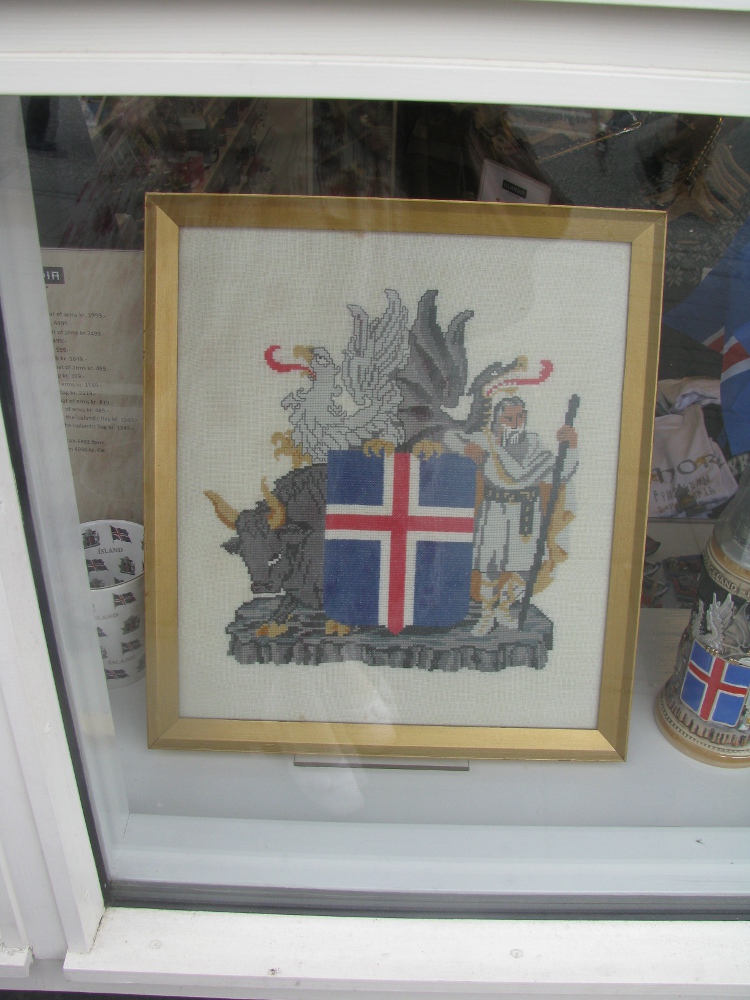Happy birthday, Iceland! Posted by hulda on Jun 18, 2013 in Icelandic culture, Icelandic customs, Icelandic history
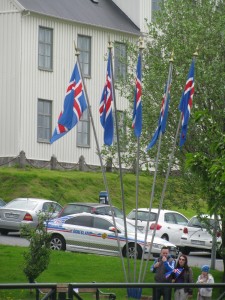 Yesterday on the 17th Iceland celebrated its independence in the usual way: lots of noise, live music everywhere, street art, candy, flags in every form and shape and material, children running around and climbing on absolutely anything and everything they can hold on to, fierce chess matches in the rain, parades, circus shows, the selection of Fjallkonan (= mountain lady, a title of honour given to an important woman of the year), choirs, speeches by the president and other politicians… describing it would not do justice to it so let the photos do the talking instead – at least most of it. 😉
Yesterday on the 17th Iceland celebrated its independence in the usual way: lots of noise, live music everywhere, street art, candy, flags in every form and shape and material, children running around and climbing on absolutely anything and everything they can hold on to, fierce chess matches in the rain, parades, circus shows, the selection of Fjallkonan (= mountain lady, a title of honour given to an important woman of the year), choirs, speeches by the president and other politicians… describing it would not do justice to it so let the photos do the talking instead – at least most of it. 😉
The day turned out to be cloudy with an occasional drizzle. The joke is of course that it always rains on the Independence Day, but it’s one of those jokes that are so close to reality that they may not make you laugh too much. However, at least in the north Iceland the weather seems to have been absolutely wonderful, sunny and warm.
Downtown was absolutely thronging with people, although the cloudiness made people arrive a bit later than last year when the day was mostly sunny. All the streets were naturally closed for traffic.
Shop windows were decorated in style. Sometimes perhaps slightly too much style – what am I saying, there’s no such thing as too much style!
…I have NO idea what’s going on here. 😀
Sumar götur eru sumargötur – some streets are summer streets. This refers to Laugavegur being closed for traffic not only for the 17th June but for the rest of the summer as well.
Three generations wearing the upphlutur, a type of Icelandic national costume.
More national costumes – from left to right: faldbúningur, peysuföt and upphlutur. Of these the faldbúningur is the oldest and has the familiar Icelandic headpiece with the curving plate on top. The other two dresses have small, round velvet hats with large silk tassels.
(By the way if you happen to see a woman wearing the faldbúningur with its headpiece pointing back instead of front… run. That may be an extremely malicious kind of an Icelandic ghost called skottur. It follows its victims until they go mad or die, some of them even go after whole families, generations after generations.)
An entirely different kind of traditional Icelandic clothes! This group was partaking in the festivities not only as a guest, they also hosted duels and other sword battles for children.
I am so not kidding by the way. 🙂
The shield in the middle has an ancient magical stave called ægishjálmur (= helm of awe) painted on it. It protects its wearers and strikes fear into their opponents.
Someone had drawn the coat of arms of Reykjavík into concrete. Nice work, definitely better than the usual cat paw prints I’d say!
Another, less permanent sort of street art. Every part of this one seemed to be a traditional Icelandic knitting pattern. I was amazed at the sheer size of it – you’ll see the whole thing in the video at the end of this entry.
Art in process. I saw at least three artists working on this piece simultaneously, it certainly looked a lot of work.
In case you’d like to add to the art pieces found everywhere in the city make sure of one thing: it has to be made strong. This is something that inevitably happens to every statue downtown, they get climbed upon every time something special happens.
Chess is almost a national sport in Iceland – bear this in mind if you come over and like playing it! Every national celebration will have long rows of chess tables for people wanting to play, or if fancy strikes you nothing stops you from heading downtown with just a set of pieces. You won’t need a board, there are permanent ones right in the middle of the City Centre.
Some handy vocabulary for any kind of a ticket buying situation here:
Miðasala (= ticket sale)
ATH! kort, peningar (= attention! card, cash)
Tilboð! (= offer!)
Armband/armbönd (= arm band, arm bands)
Tilboð, 11 miðar á 1000 kr. (= offer, 11 tickets for 1000 kr.)
Gildir ekki í fjórhjólin (= not for the quadricycles)
(meaning that the arm bands will not allow you entrance to this particular attraction)
There is one house in Reykjavík that every single year flies the Hvítbláinn (= the white-blue) instead of Fáninn (= the flag, a name used only for the official flag of Iceland). Hvítbláinn was never an official flag of Iceland although it was a very popular option when Icelanders were choosing their flag, not the least because it’s an obvious jab at the Dannebrog, the Danish flag. The proportions of Hvítbláinn are the same, but the colour obviously very different. Eventually another flag, the one with the red cross included, was selected to avoid confusing the flag with the Swedish or the Greek flags of the time.
I’m not certain why this particular house always flies the Hvítbláinn, but there it is without a miss every single year. I’ve heard two stories that might have something to do with it – either at this house, a young man once climbed on the roof and replaced the Dam-nish flag there with the Hvítbláinn as a sign of rebellion, or it may be flown in honour of the women’s association that flew the white-blue first in the summer 1897. I’ll let you know if I’ll ever manage to solve this mystery!
Here we have the coat of arms of Iceland with its four guardians: Griðungur, Gammur, Dreki and Bergrisi, the bull, the eagle/griffin, dragon and the mountain giant. Together they’re called landvættir, land wights. They each guard a fourth of the land, meaning that the bull is the guardian spirit of Reykjavík.
According to Heimskringla, king Haraldur blátönn (= blue tooth) Gormsson wanted to take over the country and told his wizard to find out how easily he could hope to accomplish this. The wizard turned himself into a whale and swam to Iceland, where he found that the land was absolutely teeming with vættir large and small. He tried to step onshore at Vopnafjörður in the northeast of the country, but there a giant dragon attacked him and with it came all kinds of snakes and lizards that all attempted to poison him. The wizard escaped, swam to the west and tried to come ashore at Eyjafjörður in the northwest.
Here he saw a giant bird, so large that its wings touched both sides of the fjörður, that came flying at him with a horde of other birds. The wizard then swam south, arriving to Breiðafjörður in the southwest, but did not even manage to set a foot on land when he saw a giant bull with all kinds of animals following it, bellowing fiercely at him. He tried one last time in Vikarsskeið, but here he was attacked by a giant who was flanked by other creatures of giant and troll kind. Thus he had to return to Haraldur blátönn with bad news – the land was so well guarded it did not pay to even try.
Here are some moods, sounds and more photos of the day.
And now for something completely different:
I’d like to thank everyone who too part in the competition, I was absolutely floored by how much interest it got and how well you answered all of the questions! Because I have quite many entries now (and most of them get multiple entries for the draw) it’s going to take me just a few days more to get all the tickets ready for the draw. Sorry about the wait, and thank you, thank you everyone who partook in it, reading your answers was one of the best moments of writing this blog – þið eruð æði!
(= You are awesome!)

Build vocabulary, practice pronunciation, and more with Transparent Language Online. Available anytime, anywhere, on any device.
About the Author: hulda
Hi, I'm Hulda, originally Finnish but now living in the suburbs of Reykjavík. I'm here to help you in any way I can if you're considering learning Icelandic. Nice to meet you!



